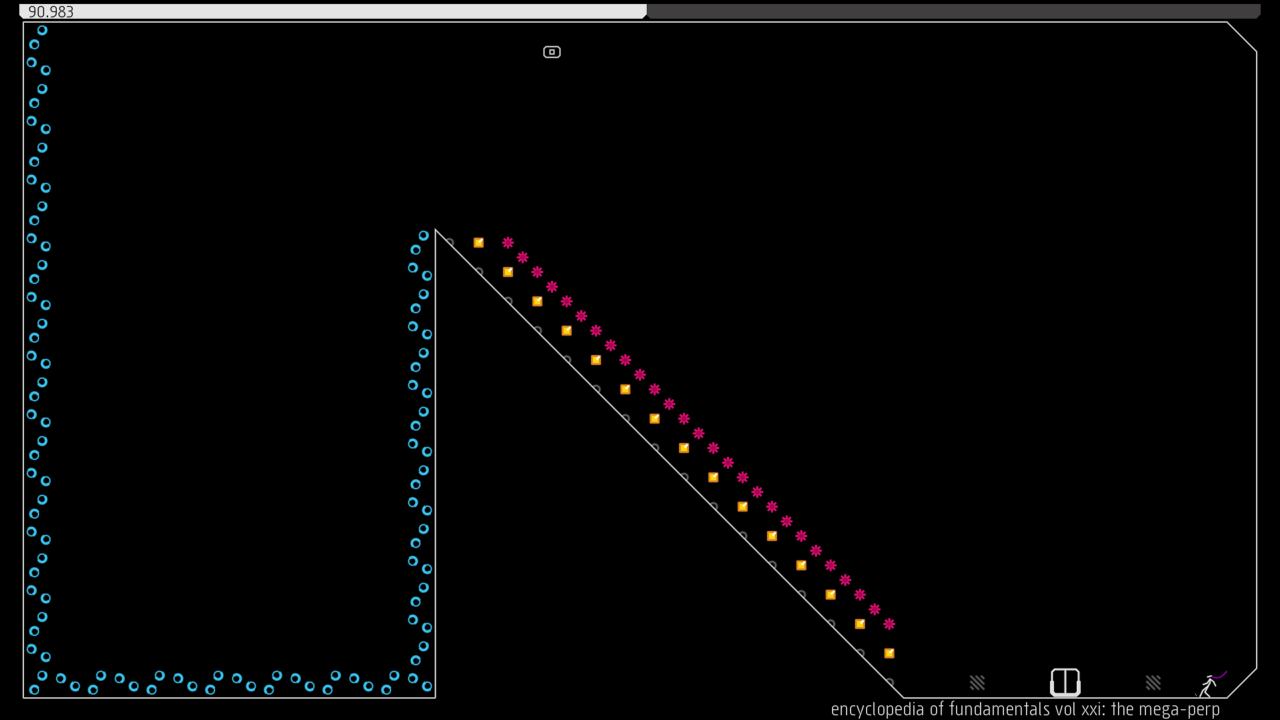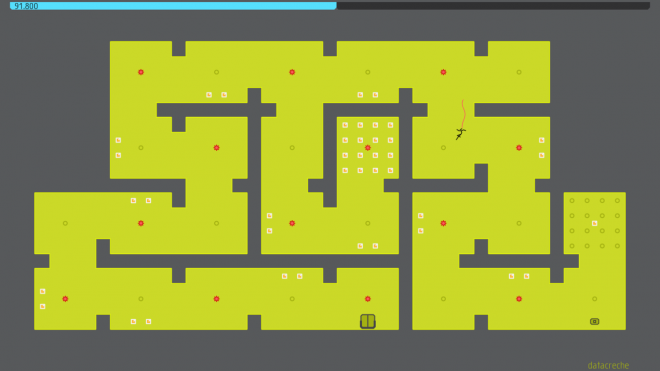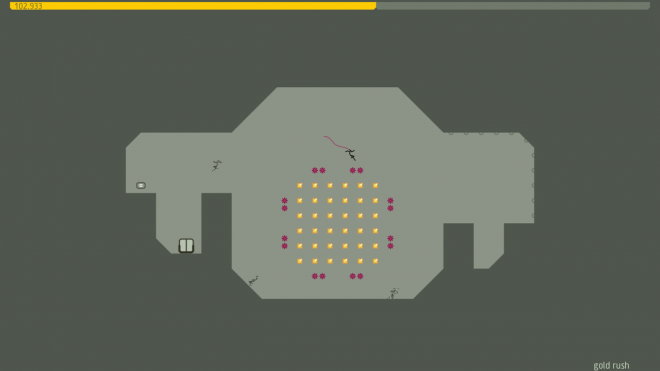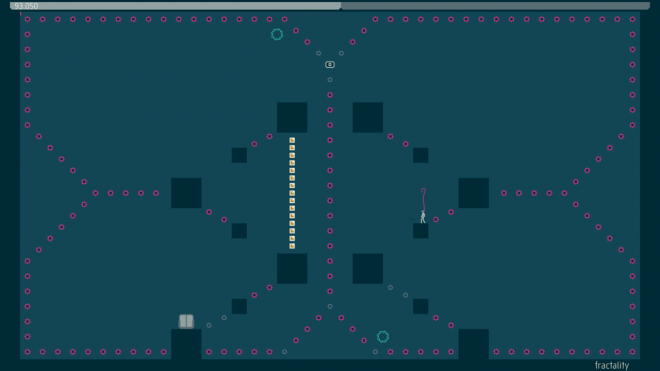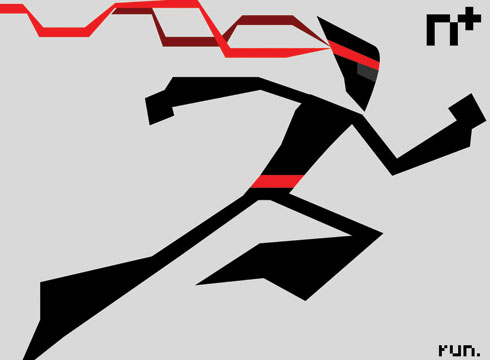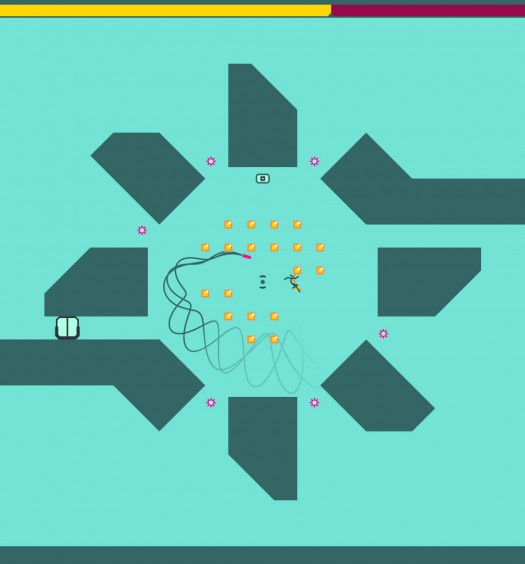Anyone else remember N+? It takes a weird spot in XBLA history, having come out before the heavy hitters like Braid and Castle Crashers really put the digital marketplace in the spotlight. It was a simple but well-executed platformer which was pretty difficult – it was the Super Meat Boy of XBLA’s early stage, for lack of a better analogy. It wasn’t perfect, but it was a ton of fun, so I found it particularly exciting that its sequel N++ (stylistically written as NPLUSPLUS) was coming to Xbox One. Probably the only thing more exciting than the game itself is the fact nobody has to buy this one with Microsoft Points.
Here’s what I liked:
Ninja++ – If you played any of the previous games in the series, you’d already have a good grasp on the game because it remains largely unchanged. You’re a ninja, and all you can do is run and jump. The big emphasis is how your movements are influenced by physics, as you try to gain and maintain momentum while remaining agile enough to avoid obstacles. This is a game of skill that relies heavily on skill, not only in perfectly timed jumps but also in knowing how to manage speed when jumping around flat floors, slopes, and wall. The controls feel tight, responsive and react appropriately to your current speed; surviving a level’s a lot harder at breakneck speed than at a leisurely pace, but both speeds feel valid and rewarding. The game plays exactly the same as the previous title, but there was no need to alter a winning formula.
Levels++ – The true evolution of this sequel lies in its content. Not only does it literally have thousands of brand new levels, there’s a lot of new elements mixed in. Just to name a few, there’s boost pads, respawning mines and (perhaps most dastardly of all) deadly ghosts that copy your every move but are on a short delay. All the old favorite death traps also return, including the wide array of lasers, tasers and machine guns. Mix those in with some building blocks for the environment, and you got an extensive palette that can be used for a nearly endless supply of levels. The developers did a great job pulling every last drop of creativity out of their tool set. There’s a massive single-player campaign as well as a shorter co-op campaign. Both modes are playable with one to four players, which is odd because most co-op levels are literally impossible to complete without at least one other person. The game gets to be quite challenging, but thanks to the sheer amount of content there’s plenty of easier stuff to provide hours of enjoyment before you get into controller-breaking territory.
Color++ – One of my biggest pet peeves with N+ was how boring it looked; the entire game was an endless sea of gray. N++ tackles this issue head-on, providing a huge list of color schemes for the player to choose from, with the option to automatically switch pallets after every episode. The art design is noticeably slicker and streamlined, making everything easily recognizable by shape (as their color can vary). If anything the sequel has the exact opposite problem of its predecessor, as the screen can be covered with so much vibrant color, it becomes an eyesore, but thankfully there are far more good visual options than bad.
Here’s what I didn’t like:
Glut++ – There’s a lot of good that came from how the developers constantly iterated on their tile set to create new and greater challenges, but it’s possible there’s too much content here. Everything builds on one basic framework: the game is split up into “episodes” which are a string of five single-screen levels, and you must complete all five in the time allotted. Time can be added to the clock by collecting gold scattered throughout the levels. You finish a level by hitting a button to open the exit, then enter the exit door. Whether you’re in single-player or co-op, that’s the whole game. The game undoubtedly does well within the tight bounds of this structure, but there’s so much content it’s almost impossible for anyone not to feel like it becomes a slog at some point.
Zoom++ – In N+ you had multiple levels of zoom, so you could either see the whole level or get in closer to your character. I always preferred the latter, as it made it feel more like a traditional platformer and the character always seemed too small when pulled all the way out. N++ only has the full level view, which makes everything feel small but at least the visuals are to parse. There are some levels that only take up a small portion of the screen, so it’d be nice to at least get a closer look at those.
Wrap-up:
N++ may be the definition of “too much of a good thing.” As much as I enjoy the game, it got tiring after a while, soon finding it more enjoyable in short bursts rather than long marathons. If you’re fine with a mountain of content that becomes so difficult, you’ll most likely never finish it all; this is a great sequel that kept retained what was good about the last game and made some worthwhile additions. It gets repetitive, but the gameplay is so fun it’ll keep pulling you back in for more.
Score: Highly Recommended
N++ was developed and published on Xbox One by Metanet Software. It was released October 4, 2017, for $14.99. A copy was provided for review purposes.

